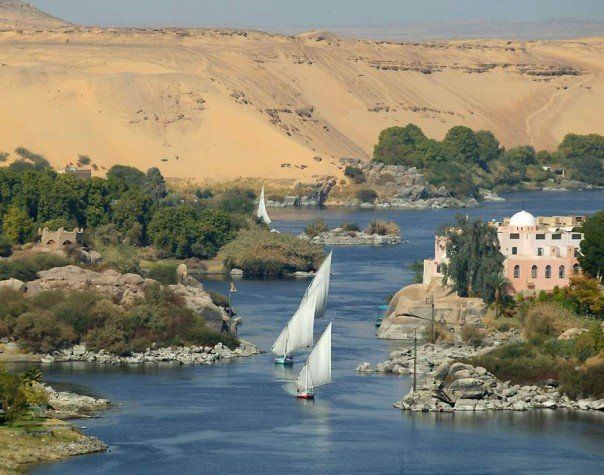Egypt Faces Nile Delta Freshwater Supply Crisis
Published on by Water Network Research, Official research team of The Water Network in Academic
A multi-year study of Egypt's Nile Delta places the country's major breadbasket at serious risk.

The soil-rich delta evolved as the result of natural conditions involving the Nile's fresh water flow and transport of sediment northward from Ethiopia, across the Sudan and Egypt to the Mediterranean.
About 70% of water flow reaching Egypt is derived from the Blue Nile and Atbara River, both sourced in Ethiopia. Over the past 200 years, rapidly increasing human activity has seriously altered flow conditions of the Nile. Emplacement in Egypt of barrages in the 1800s, construction the Aswan Low Dam in 1902, and the Aswan High Dam in 1965 has since altered water flow and distribution of nourishing organic-rich soil in the delta.
Egypt's population has recently swelled rapidly to about 90 million, with most living in the soil-rich Lower Nile Valley and Delta. These two areas comprise only about 3.5% of Egypt's total area, the remainder being mostly sandy desert. Due to much-intensified human impact, the delta no longer functions as a naturally expanding fluvial-coastal center. Less than 10% of Nile water now reaches the sea, and most of the nutrient-rich sediment is trapped in the delta by a dense canal and irrigation system.
The low-lying delta plain is only about 1 m above present sea level. The northern third of the delta is lowering at the rate of about 4 to 8 mm per year due to compaction of strata underlying the plain, seismic motion, and the lack of sufficient new sediment to re-nourish the delta margin being eroded by Mediterranean coastal currents.
While the coastal delta margin is being lowered, sea level is also rising at a rate of about 3 mm per year. Delta lowering and sea-level rise thus accounts for submergence of about 1 cm per year. At present rates, saline intrusion is now reaching agricultural terrains in central delta sectors -- the coastal 20 to 40 km of delta surface will be underwater by the end of this century.
This down-river decrease of Nile fresh water will produce grave conditions. The pre-GERD Nile flow now barely supplies 97% of Egypt's present water needs with only 660 cubic meters per person, one of the world's lowest annual per capita water shares. With a population expected to double in the next 50 years, Egypt is projected to have critical countrywide fresh water and food shortages by 2025.
Read more at: Science Daily
Media
Taxonomy
- Resource Management
- River Studies
- Ecosystem Management
- Freshwater
- Climate Change
- River Restoration
- Dams
- Sea Level Rise Risk Perception
- Sea Level Rise Vulnerability Assesment